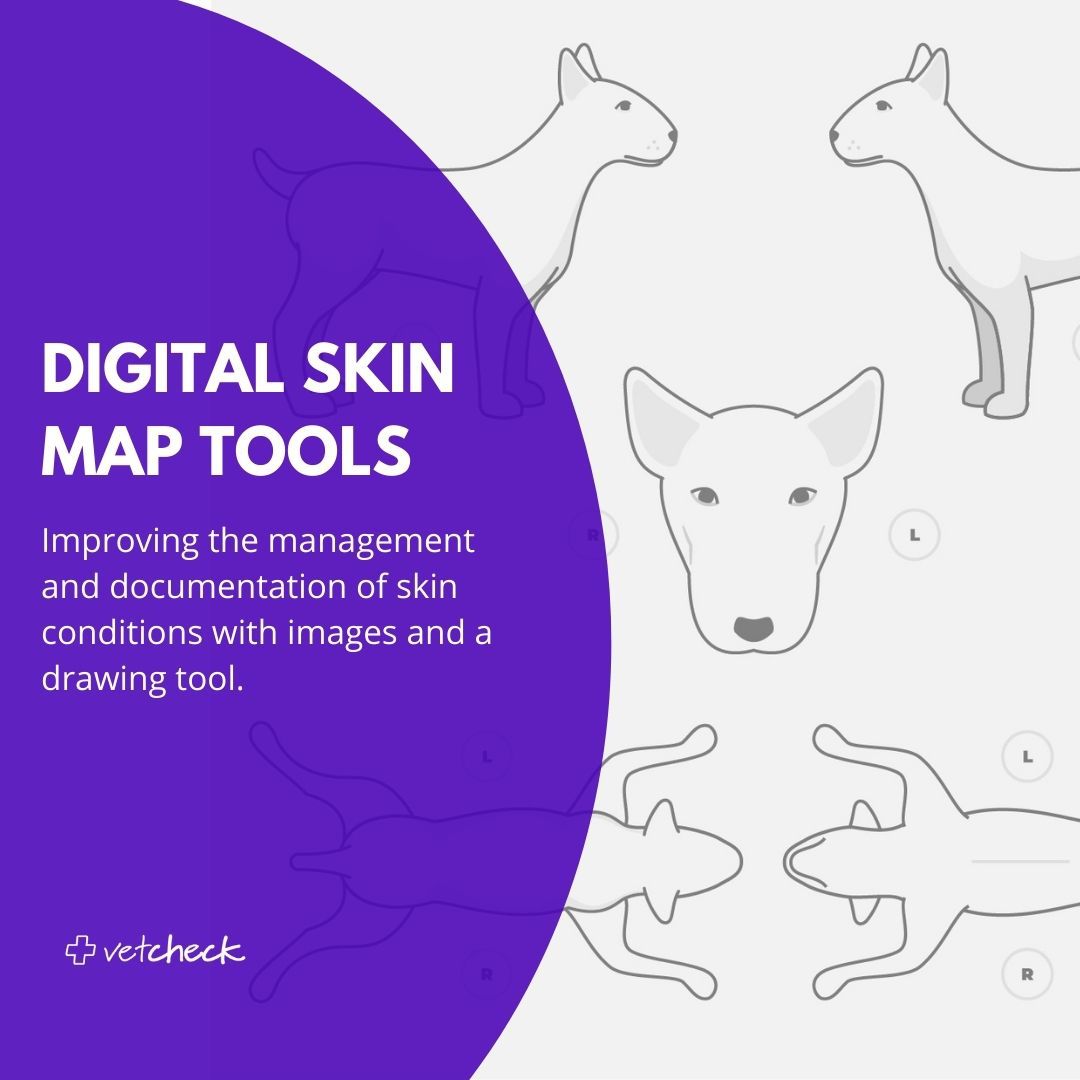An Update with Veterinary Dermatology Expert, Dr. Brian Shen
Brian graduated from the University of Queensland in 2019 where he first met the Dermatology team during his final year rotation, and developed his interest in Dermatology. After graduating, he worked in general practice for a awhile before commencing an Internship with Dermatology for Animals In August 2020.
Allergies can be a frustrating condition for all involved but are not always referred in a timely manner. Why are allergies so frustrating to manage?
Allergies are frustrating to manage for a range of different reasons. The chronicity of the disease, the fact that there is no 'quick fix' to the disease and the natural waxing and waning nature of the disease is a major factor contributing to frustration for both the veterinarian and the owners involved. In addition to that, secondary infections, the wide variation of presenting signs and the lengthy differential diagnosis can often complicate the clinical picture. This means that reaching an accurate diagnosis can sometime be challenging especially in a general practice setting. Managing client expectations is vital in allergic cases as most of these patients require life-long treatment and if the owners are aware of this from the start then it's usually easier to keep everyone on board.
What are the top causes of allergies? Do these remain consistent over time or are some allergies increasing in incidence?
The top causes of allergies have largely remained the same over time. In dogs, the most common allergy that we see is atopic dermatitis, followed by food hypersensitivity, contact dermatitis and flea hypersensitivity. There has been a decrease in prevalence of flea hypersensitivity over the years with the new isoxazoline tick and flea prevention products (Nexgard Spectra, Bravecto, Simparica) coming on to the market.
In cats, the most common allergy that we see is flea bite hypersensitivity, followed by food hypersensitivity then atopic dermatitis. This has remained largely unchanged over time.

What are the top manifestations of allergies? Unusual ones?
Atopic dermatitis can present in a wide variety of ways. The most common clinical signs include pruritus with either visible or non-visible lesions on the skin, diffurse erythema or erythematous macules. The most common areas affected in the dog include the feet, axilla, groin, abdomen, flanks, ears. Some less commonly seen manifestations include recurrent bacterial folliculitis or furunculosis which may or may not be pruritic. Some non-cutaneous clinical signs that are more rarely seen include allergic conjunctivitis, rhinitis and reverse sneezing which may or may not be seasonal.
Do you have any advice on how best to determine which chronic allergy cases are best managed with a referral for desensitization vs those that are best managed with long-term medication?
Desensitisation immunotherapy is only effective for atopic dermatitis and will not be effective for food allergy, flea allergy or contact dermatitis. In general, for atopic dermatitis, desensitisation immunotherapy is the safest long term therapy and the only therapy that treats on the underlying cause by inducing of immune tolerance of allergens. Some factors that can be taken into consideration include the patient's age, temperment, efficacy of other allergy dugs, other co-morbidities, client's financial situation, compliance etc. In a young atopic dog desensitisation is usually a good choice as some cases can have therapy withdrawn and remain symptom-free long term.
Are there any conditions that present very similarly to allergies that GPs should have on their radar when working up these cases?
Unfortunately, there are only a few ways that the skin can react to a huge number of different underlying diseases and this means a lot of diseases look the same! There are a few diseases that may present similarly to an allergic dog. If the history of the patient doesn't quite make sense for allergies (e.g. old age of onset without prior history of skin disease, non-pruritic, acute onset severe changes) then non-allergic causes should be considered. Some other diseases that can be kept in mind include pemphigus foliaceous, epitheliotropic lymphoma (in older patients with no prior history of skin disease) and sebaceous adenitis.

How would you summarise the steps in working up a pruritic dog?
The first step would be a comprehensive history collection followed by physical examination of the patient. Depending on the findings diagnostic tests eg. cytology to rule out the role of secondary infections would be the next step. Sometimes biopsies are required if the clinical presentation is unusual or if the history does not fit with an allergy to confirm the diagnosis of an allergy. This will then lead to further diagnostic tests to rule out different types of allergies such as elimination diet trials, contact avoidance trial, flea elimination trial (when appropriate).
Are there any dermatological cases on the rise that general practitioners should be aware of?
The incidence of Methicillin Resistance Staphylococcus Pseudintermedius (MRSP) has definitely increased over the last decade and as a practice we feel this has been more marked over the last few years. MRSP can play an important role by causing secondary infections in different types of underlying diseases such as different allergic diseases, otitis externa or media and immune-mediated diseases. Secondary infections complicate the clinical picture and while MRSP is not more virulent than the sensitive strain (MSSP), it is often much more difficult to treat with limited systemic antibiotic options. MRSP is identified on culture and sensitivity testing and culture should be considered in cases of bacterial infection that are poorly or non-responsive to empirical antibiotic choices, or in infections that rapidly recur even after treatment with an appropriate antibiotic for an appropriate length of time (generally 3 weeks for superficial pyoderma).
How would you summarise the steps in working up a dog with a chronic ear problem?
Chronic ear problems are always frustrating to deal with both for the veterinarian and for the client. The first step is to recognize the factors that lead to recurrent infections and which ones are relavent for the individual patient (underlying allergy, patient anatomy, swimmer vs. non-swimmer, environment). Next is to recognize the fact that resolving the infection is only the first step in to chronic otitis management. A detailed history, physical examination of the ear canals, cytology, treatment with the appropriate medicated ear drops at an adequate volume to flood the ear canals maximizes the chances of resolving the current infection and allows for more information into the underlying cause is. After resolving the current infection, maintenance treatment with Cortavance twice weekly can often be very effective in our experience and where our practice is located (Queensland).
What are your thoughts on surgical vs laser treatment of the stenotic ear canal? When would each be indicated?
Surgical and laser treatment of the ears both have their own place and is indicated at different times. Laser surgery is often very helpful in cases with hyperplastic chronic otitis causing a marked stenosis of the opening of the ear canal. Laser surgery is also helpful where a pedunculated mass needs to be removed. It is less helpful in cases with swelling of the whole ear canal causing a stenosis of the entire canal, or in calcified ear canals due to chronic inflammation. This is where traditional surgery (TECABO) may be more indicated as a salvage procedure.
Can you share any updates in animal dermatology that would be relevant to the general practitioner?
Referral dermatology practice on the whole has definitely seen an increase in the incidence of Methicillin Resistance Staphylococcus Pseudintermedius (MRSP) cases over the last few years, as discussed above. This should be a good reminder to consider the possibility of resistant bacterial infections and practice good antimicrobial stewardship.